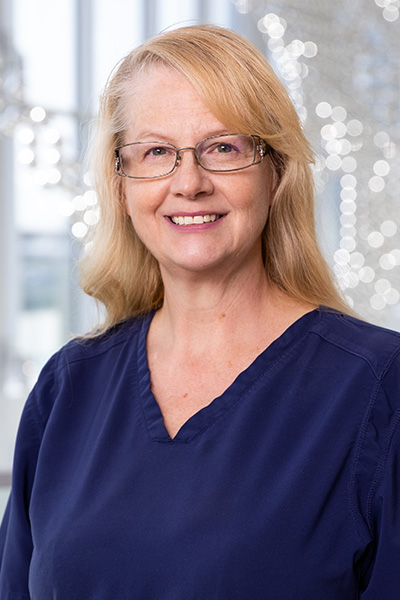Kimberly Pervis: 25 years

Senior Histocompatibility Technologist
Clinical Laboratory Services – Transplant Immunology
First UTSW job: Histocompatibility Technologist.
Best part about my job: Knowing that I help improve the quality of people’s lives and contribute to second chances. It can mean parents get to watch their child grow up or children get to be raised by their parent who got a lifesaving solid organ or bone marrow transplant.
What energizes me at work: Knowing that what I do impacts patients’ lives. It matters to me that those within my sphere of influence do well and thrive.
How co-workers describe me: Capable and knowledgeable. I can fix almost anything on instruments. I am the only tech in our lab with a full clinical degree and two board certifications.
Recipe for success: Curiosity and tenacity. I have a great desire to understand how and why things work. I also have a high standard of excellence, and I am tenacious about seeing things through.
Best UTSW memory: Getting to work under Peter Stastny, M.D., and being permitted to do clinical research and development when our Department was under Internal Medicine. When our lab was under Internal Medicine, we were permitted to make a lot of advancements in the field of histocompatibility and immunogenetics, commonly known as transplant immunology.
I wish I were an instant expert at: Being an invertebrate paleontologist. North Texas does not have one, and there is so much work to be done to describe the invertebrate paleo fauna of Texas.
I’m really good at: Flow cytometry.
Passion: Paleontology and a standard of excellence in whatever I do.
Surprising fact: I am a serious amateur paleontologist. I have served on the board of the Dallas Paleontological Society, and I volunteer to do paleontological excavations for both the Perot Museum of Nature and Science and Southern Methodist University.
Claim to fame: In 1999, I developed a new crossmatch method for organ transplant that utilizes flow cytometry, a technology that uses lasers to rapidly analyze cells. This method uses B lymphocytes, which express MHC Class II, part of the immune system, instead of red blood cells like crossmatches for blood transfusions. Our lab still uses this crossmatch method for every solid organ transplant, as do most transplant labs around the world.

